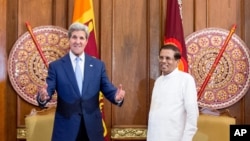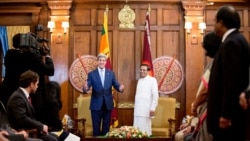January 8th of this year brought surprises for Sri Lanka: Maithripala Sirisena, the country’s former Minister of Health, defeated in an upset, incumbent President Mahinda Rajapaksa, who held the office since 2005, and was a clear favorite to win another term. Mr. Sirisena, who ran on an anti-corruption platform that included strengthening the rule of law and democratic governance, won 52.5 percent of the vote of a record 81 percent voter turn-out.
President Sirisena had tapped into the electorate’s discontent with the corruption, weakening of the rule of law and increasingly stricter authoritarianism of the Rajapaksa regime. Since his victory, President Sirisena has implemented a number of reforms, including removing media restrictions, lifting restrictions on foreign travel to the North, and initiating corruption probes. He also worked hard to get Sri Lanka’s Parliament to pass the 19th Amendment, which rolls back much of the presidential power that his predecessor had appropriated for himself.
“Democratic elections have also brought about a sea-change in our relationship with Sri Lanka . . . where the new president has moved the country away from divisive politics and crony capitalism toward a new path of reconciliation and inclusive development,” said Principal Deputy Assistant Secretary of State for South and Central Asian Affairs Richard Hoagland.
We plan to do a lot to support Sri Lanka’s pursuit of that new path, to strengthen its governance, especially its judicial and financial institutions.”Principle Deputy Assistant Secretary of State Richard Hoagland
President Sirisena has made a good start of it, but he faces an enormous task, including reconciling a population still only half a decade removed from 30 years of civil war, improving the country’s human rights situation, rooting out entrenched corruption and strengthening weakened institutions. The United States stands ready to help him achieve his commendable goals.
“We plan to do a lot to support Sri Lanka’s pursuit of that new path, to strengthen its governance, especially its judicial and financial institutions,” said Mr. Hoagland. “This new path will be a boon for the Sri Lankan people, but also for U.S. interests: we can now work together with Sri Lanka to promote good governance and human rights abroad, as well as improve maritime security in the Indian Ocean.”

















